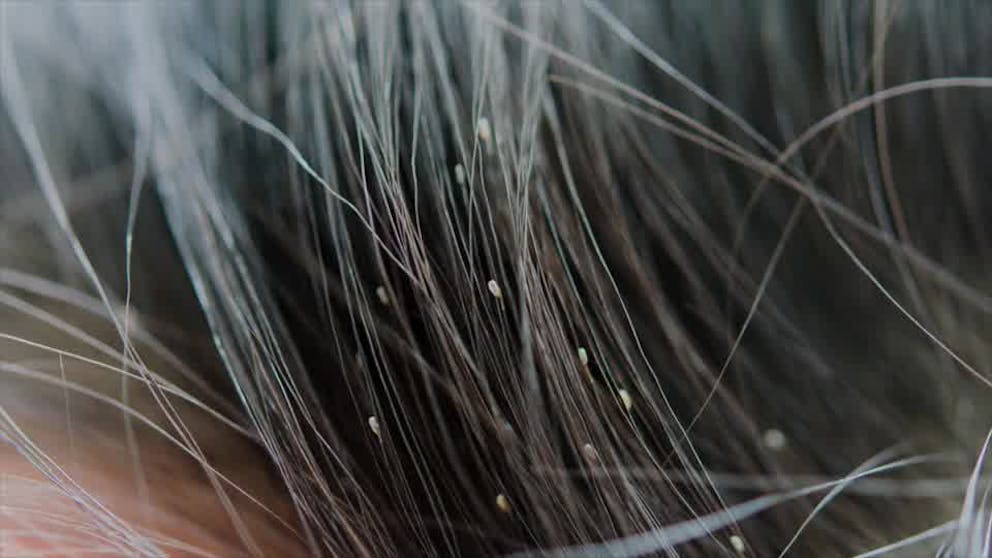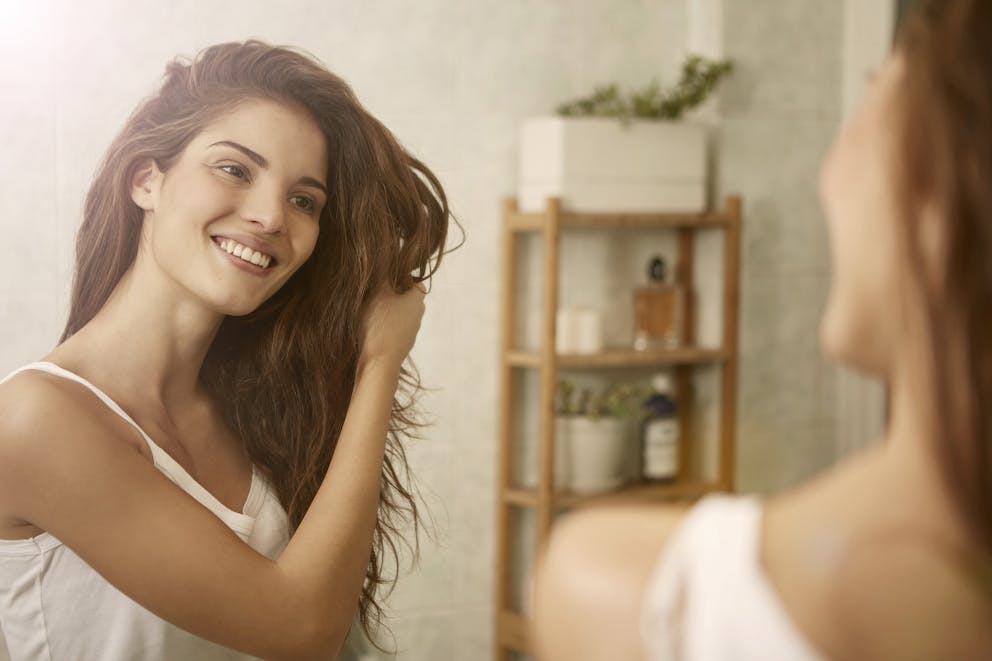Head Lice: Best Home Remedy
Discovering head lice on your child can be frustrating and confusing. Many parents feel overwhelmed, but effective natural head lice treatments exist.
This blog post will discuss tackling head lice without harsh chemicals. A recent surge in "super lice" has made some chemical treatments less effective.
This has led many parents to search for safer, natural head lice treatments. Many natural remedies can be just as effective.
Understanding Head Lice
Head lice are tiny parasitic insects that live on the human head and feed on blood. They are a common problem, especially among children aged 4-11.
Lice don't transmit diseases, but their bites cause an itchy scalp, leading to scratching and possible secondary infections.
Head lice can make a child's hair very uncomfortable, and often, head lice don't die easily.
The Life Cycle of Head Lice
Understanding the life cycle of head lice is essential for effectively treating and preventing re-infestation. The life cycle has three stages: egg (nit), nymph, and adult.
Nits: These are lice eggs firmly attached to the hair shaft near the scalp. They are oval-shaped and yellowish-white.
Nymphs: After hatching, nits become nymphs, smaller versions of adult lice. They mature into adults within about a week. Nymphs are notoriously difficult to kill and often require multiple treatments to eliminate completely, something important to remember if you need to treat head lice and not have them come back again.
Adults: Adult lice are about the size of a sesame seed and tan to grayish-white. Female lice can lay up to eight nits per day, making them extremely prolific. An adult louse can live about 30 days on a human head.
Knowing the signs of head lice infestation beyond an itchy scalp can help reduce spread among family members.
Use a magnifying glass to examine your child's hair closely for live lice and nits, often called head lice eggs.
Check frequently behind the ears and at the nape of the neck. This is where they often lay eggs.

How Natural Head Lice Treatment Works
While several over-the-counter lice treatment products exist, natural alternatives offer several advantages.
The growing issue of pesticide resistance often makes chemical-based lice shampoos work less often, making natural head lice treatment a smarter approach.
Repeated treatment is also not uncommon if lice treated previously come back again.
Wet Combing
Wet combing is a widely recommended natural head lice treatment for removing lice and nits. Start by applying conditioner to wet hair.
Meticulously comb through each section of the hair with a lice comb (nit comb). Rinse the comb after each pass to remove any lice or nits.
Essential Oils
Certain essential oils, like tea tree oil, are traditionally believed to have insecticidal properties and are used in some natural head lice treatments.
Combine a few drops of tea tree oil with a carrier oil like olive oil and apply it to the scalp. Always dilute essential oils before application.
Essential oils can have side effects, like contact dermatitis and potential complications for young children, older adults, pregnant or breastfeeding women, or people with certain health conditions.
Consult a qualified healthcare provider before beginning any treatment using tea tree oil.
Smothering Agents
While extra virgin olive oil doesn't kill lice, it may coat them, interfering with their breathing and making combing easier, functioning as a sort of DIY lice treatment.
Some sources indicate other oils and agents could also smother them. Apply the chosen agent liberally to the hair and scalp.
Cover the hair with a shower cap and leave it on for several hours, or preferably overnight. Thoroughly comb out the hair afterward with a fine-toothed comb.

Additional Tips for Preventing and Managing Head Lice
Head lice spread primarily through head-to-head contact. Teach children to avoid head-to-head contact to help prevent lice.
Discourage sharing personal items like combs, hats, brushes, pillows, scarves, and hair accessories to minimize the spread.
Clean and treat these items by washing and drying clothing, bedding, and any hair-related items in hot water.
Lice cannot survive hot water cycles exceeding 54 degrees Celsius (130 degrees Fahrenheit) for around 5–10 minutes. This effectively kills the pests and reduces their reproduction ability.
Using a hair dryer on high heat after towel drying can cause increased hair temperatures near the roots, further increasing the success rate of killing lice and nits.
Vacuum any items that can’t be washed, especially places that the head regularly touches, like bedding or furniture.
Maintain personal hygiene which also contributes to prevent lice, since having poor hygiene could put family members and potentially those not of the immediate family members at higher risk.
Harnessing Essential Oils for Safe and Natural Lice Removal
Essential oils like tea tree, lavender, and eucalyptus have gained popularity as effective natural remedies for head lice.
These oils work by suffocating lice and preventing their reproduction, offering a chemical-free alternative to conventional treatments.
For those already exploring natural health practices, such as a parasite cleanse for internal health, using essential oils for external parasite management aligns with a holistic approach to wellness.
Incorporating essential oils into your lice treatment routine can provide a safe, non-toxic method for addressing infestations while supporting scalp health.
With consistent application and proper care, these natural remedies can effectively eliminate lice without the harsh side effects of chemical treatments.
Conclusion
Dealing with head lice can feel overwhelming. With a comprehensive natural head lice treatment plan, combined with preventive measures and information about lice treatments, you can tackle an infestation and minimize recurrence.
Understanding their life cycle, signs, and viable remedies helps manage it faster. Remember that treating head lice promptly is important to prevent further spread and discomfort.
So, get ahead of a lice infestation quickly with appropriate remedies. Your care provider can be a great resource for personalized treatment options, especially for certain skin sensitivity types.
The insights shared here are not a replacement for medical care. While "natural" is appealing, essential oils are powerful chemicals.
Some individuals might have sensitivities to certain natural remedies. When exploring a natural head lice treatment approach, consult medical professionals or licensed treatment centers to develop a tailored treatment strategy.
This is particularly relevant if your children are near ages when they might be most susceptible, often between children ages 4 to 11.
FAQs about natural head lice treatment
What is the best home remedy for head lice?
Wet combing is a very effective natural head lice treatment method for physically removing lice and nits.
Combining wet combing with other natural methods increases the probability of quick removal and elimination.
However, always seek advice from health professionals to ensure any treatment method is appropriate for your specific health condition.
What kills lice and eggs instantly?
Some natural treatments might help weaken head lice, but instantly killing both lice and eggs typically requires prescription or over-the-counter products or treatments offered at special treatment centers.
These often require confirmation by trained medical professionals, as treatment needs to be tailored to individual health conditions.
Does vinegar kill lice?
Vinegar can sometimes dissolve the "glue" that binds nits to hair shafts, allowing easier comb removal with a proper head lice comb and treatment method.
Vinegar does not necessarily kill live lice. Acetic acid, the active ingredient in vinegar, can help detach nits but isn't effective against live lice.
What natural oil kills lice?
Anecdotal evidence suggests that tea tree oil, among others, may eliminate lice with repeated or daily treatments.
It can potentially make comb removal more effective for hair, scalp, and egg removal. While time-consuming, tea tree oil has shown some promise as a natural treatment.
A single treatment may not be enough to kill head lice, so consistent application is necessary for optimal results.
Previous blog
Start Adding Garlic to Your MealsNext blog
What's Lacking With Split NailsTags

Popular
08/21/2024
41K views
05/22/2024
37.3K views
11/18/2024
217.5K views
03/18/2024
11/21/2022




